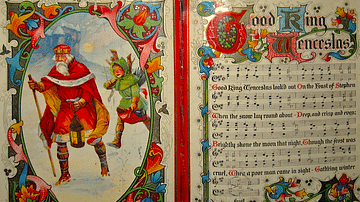Search Articles
Browse Content (p. 28)

Article
Reforms of Catherine the Great
Catherine II of Russia (Catherine the Great) was the empress regent of Russia from 1762 to 1796. During the mid-18th century, Russia was still regarded as culturally behind compared to Western European countries. However, during her reign...

Article
Battles of Lexington and Concord
The Battles of Lexington and Concord were engagements fought between British regular soldiers and militia from the colony of Massachusetts on 19 April 1775. The British troops were on their way to seize military supplies stored in the town...

Article
Caesar As Dictator: His Impact on the City of Rome
Gaius Julius Caesar (100-44 BCE) first assumed the role of dictator in 49 BCE, however, once he had secured his election as consul for the following year, he resigned after 11 days. After defeating Pompey at the Battle of Pharsalus in 48...

Article
Christian Antisemitism in the Middle Ages & during the Reformation
Antisemitism is a modern term that describes prejudice and hostility to Jews and Judaism. The origins of Christian antisemitism in the gospels are based on the story of a 1st-century itinerant Jewish preacher, Jesus of Nazareth, in the Roman...

Article
The History of Christmas Carols
Christmas carols are a much-loved part of the Christmas season and while many have a long history, others are surprisingly recent. From medieval dancing songs to the 19th-century revival, the words and music of carols have evolved over time...

Article
Origins of Christian Antisemitism in the Gospels
Antisemitism is a modern term that describes prejudice and hostility to Jews and Judaism. The term is derived from the later social scientific categorization of the subfamily of the Afro-Asiatic languages of Hebrew, Aramaic, Arabic, and Amharic...

Article
Falling Star
Falling Star is a Cheyenne tale of the great hero Hotoketana'ohtse ("Falling Star") who came from the heavens to stand up for those who could not defend themselves, slay monsters, and save the people from starvation. The hero-from-heaven...

Article
The Origin of Medicine
The Origin of Medicine is a Cherokee story on the theme of balance and respect told from the point of view of the animals and plant life. When the animal world turns against humanity for their many abuses, the plants restore balance by siding...

Article
The Grand Embassy of Peter the Great
The Grand Embassy was the name given to the long Western European tour that Tsar Peter I of Russia (aka Peter the Great, r. 1682-1725) undertook during 1697-1698. Peter was joined by hundreds of people, including noblemen, his friends, volunteers...

Article
Government and Taxes under Diocletian and Constantine
The state created by Diocletian and Constantine used to be described as despotic and oppressive, extracting higher taxes and threatening its subjects with punishments for non-compliance. Recent research, however, paints a different picture...